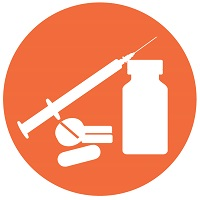Back
Clinical Pharmacology – Chemical
Session: Rapid Fire: Model Informed Drug Development (MIDD): Role in Dose Selection, Vulnerable Populations, and Biowaivers (CE)
Supporting Biowaivers with PBPK Virtual Bioequivalence: Importance of Within-Subject Variability
Tuesday, October 18, 2022
3:30 PM – 3:45 PM ET
Location: 151 AB

Amin Rostami-Hodjegan, PharmD, PhD
Director of CAPKR and Chief Scientific Officer
Certara / University of Manchester
Manchester, United Kingdom
Rapid Fire Speaker(s)
Physiologically Based Pharmacokinetic (PBPK) models can be used to virtually assess formulations bioequivalence (VBE) if suitable parameters describing mechanistic differentiation of the two formulations. Such capabilities present opportunities and challenges in informing, optimising and saving many unnecessary BE studies. As such, mathematical modelling can use identical physiology of subject in a cross-over BE simulation that may allow quantifying pure formulation effect on PK with sufficiently verified PBPK model. However, when the interest is to simulate realistic clinical BE study for purpose of validation or assessing power of a future BE study, incorporating within-subject variability (WSV) is critical. WSV in physiological parameters is rarely measured hence needs to be estimated or refined by various approaches suitable for the drug and formulation of interest. Utility of such approach with case study will be demonstrated in this rapid-fire presentation.
Learning Objectives:
- Upon completion, participant will get familiar with requirements and best practices when applying PBPK for VBE assessment for oral formulations.
- Upon completion, participant will get familiar with practical approach for applying PBPK models for VBE assessments.
- Upon completion, participant will get familiar with model input, model verification and justification requirements when using PBPK models in VBE studies
- Upo completion, participants will understand the differences in between-subject variability (BSV) and within-subject variability (WSV)
- Upo completion, participants will recognizing aternative approaches to assign WSV when conducting VBE and distinguish between WSV in physiological attributes of GI-tract and WSV of PK parameters taken from concentration-time profiles


